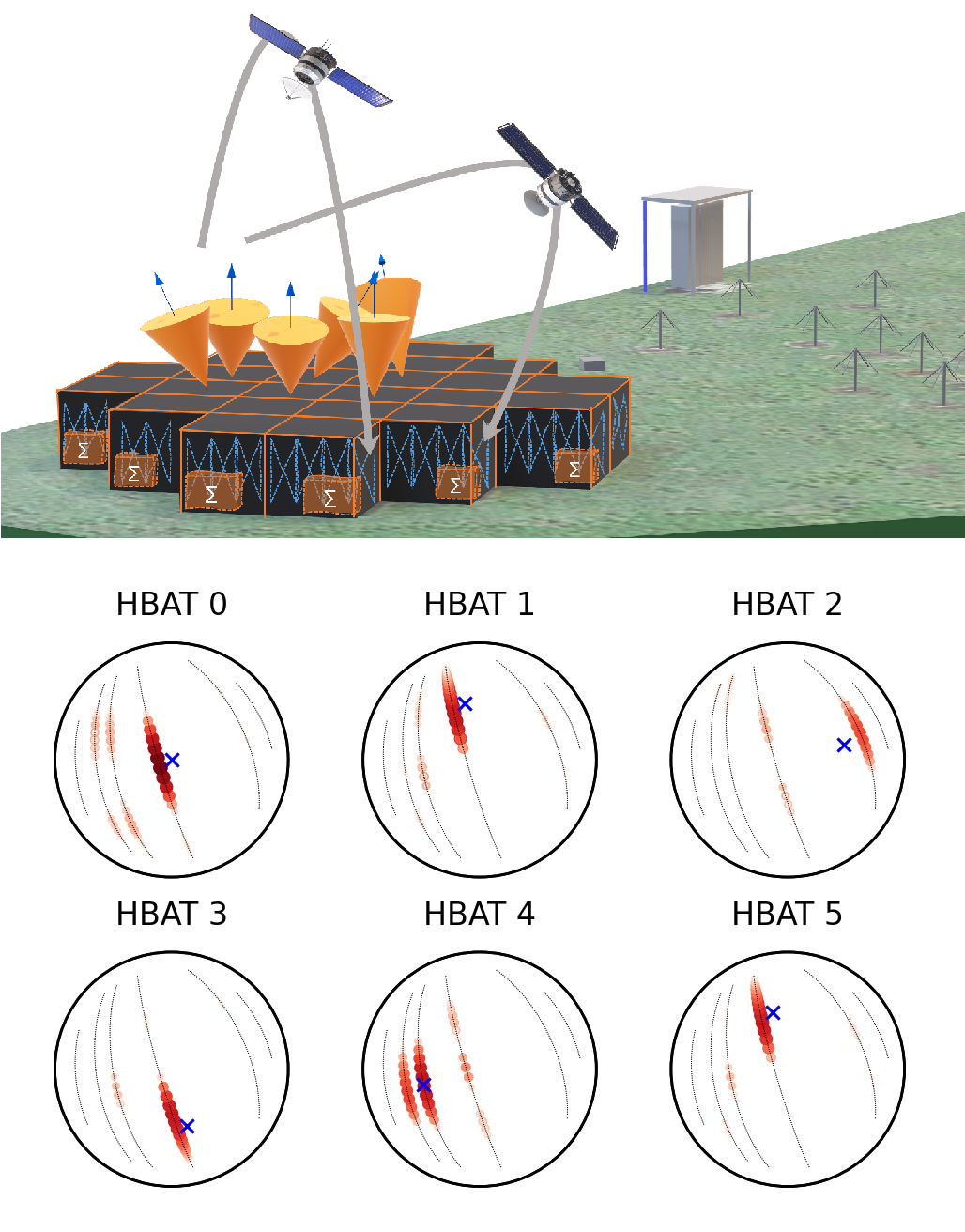| Description: | Setting the high-band antenna tiles (HBATs) in LOFAR2.0 to have their analog beams (single tile beams) pointing in a specific direction depends on quite a long chain of events, all of which should be working correctly. First the system needs to know the location and orientation of each element in the HBATs, the delay line time steps of the frontends in the HBATs and the correct time. Using this information the delay settings of each frontend in each HBAT must then be calculated correctly. These delay settings then need to be transferred to the correct Antenna Processing Subrack (APS), then to the correct receiver unit (RCU2H) in the subrack, then to the correct HBAT and then to the correct frontend in the HBAT. In order to test this whole chain, six HBATs in L2TS were pointed to different positions in the sky and the signal strength measured as some satellites fly over. The satellites should then have their maximum signal strength at different times for the six HBATs as they fly in and out of each analog beam. The blue crosses in the graphs shows the pointing direction for each HBAT (zenith is in the center, north at top and east on the right). The black lines shows the tracks of four satellites flying over (NOAA 15, 18 and 19 and METEOR-M 2 flying over from south to north on the evening of 17 October). The color and size of the red dots presents the signal strength measured by each HBATs (every 10s) in the subband with the satellite signal (when above a certain threshold). From these graphs it is clear that the analog beams in LOFAR2.0 are indeed pointing where they should be pointing! |

